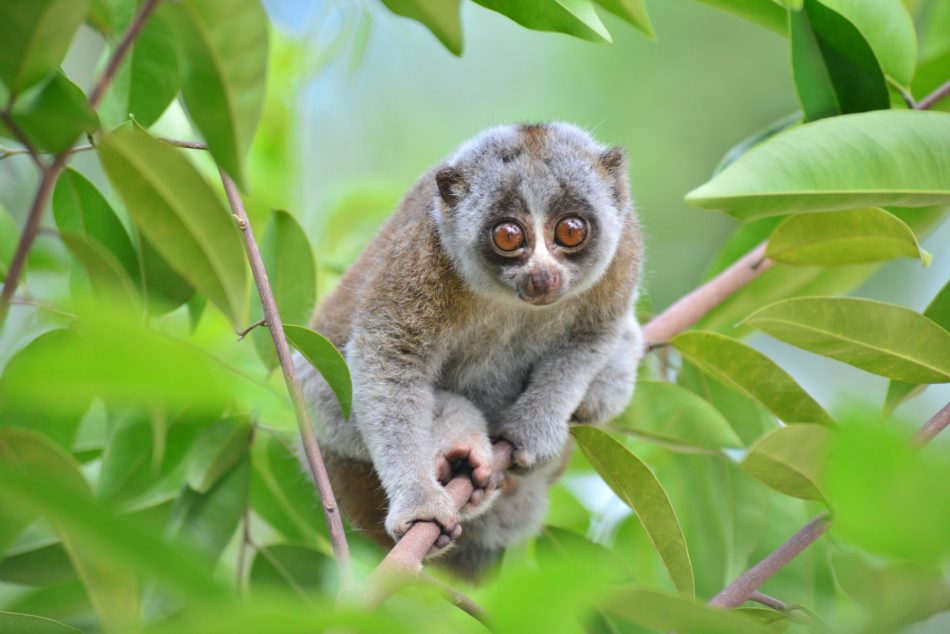When you think of primates, chances are you think of gorillas and orangutans before you ever think of the slow loris. That might be because, out of all the primates, the slow loris least resembles humans. They are venomous, pint-sized, and have a wild, oversized eye. Their nocturnal, largely solitary lifestyle also makes them a bit of a stranger to us.
In any case, the slow loris is the least protected and most poorly understood of the primates, which is especially problematic considering their numbers are dwindling across southern and south-east Asia. But thanks to a pioneering project in Java, there’s hope for these fascinating creatures.
According to Anna Nekaris, professor of primate conservation and biological anthropology at Oxford Brookes University, habitat loss is the main threat to Java’s slow loris population. Java is the most populous island on the planet, with about 130 million people on an island the size of New York state. Little more than 7% of its forests remain.
A big problem for the slow loris is that the protected national parks are at too high an altitude for natural forest-dwelling slow lorises. Their natural low-altitude habitat has become a “human-dominated” landscape where farmers grow food and often knock over trees. For a species that lives in tree canopies and relies on vines to get around, this is especially problematic. A slow loris should be able to crawl from one tree to the next, but now they are forced to cross hundreds of meters of ground to reach isolated clumps of trees. This leaves them at risk to predators such as leopards and dogs, as well as humans who try to catch them for a number of reasons.
To save the slow loris population in Java, Nekaris and a team of scientists built a network of bridges between trees to make up for the lack of safe passage in tree canopies. It was a process of trial and error to find the right type of bridge. At first, ladder-like bridges were installed between trees, but the lorises didn’t seem to like them. However, the animals were seen using some of the local farmers’ irrigation pipes to get around. This led Nekaris to the idea of installing more of them between the trees, which not only benefited the slow lorises but also the farmers.
Twelve days after installation, motion-sensor cameras showed the animals starting to creep across the new pipes. With funding from the People’s Trust for Endangered Species in the UK and Cleveland zoo in the US, there are now more than 20 water-pipe bridges in place. The bridges allow the lorises to reach previously inaccessible feeding trees, where they gouge out gum with their teeth. Nekaris also found the lorises could spend less time traveling, more time feeding, and crucially, get enough rest.
For those of us at the Optimist Daily, this story is an embodiment of solution news: we are thrilled to see scientists dedicate their lives to inventing clever, pioneering approaches to saving endangered wildlife.











